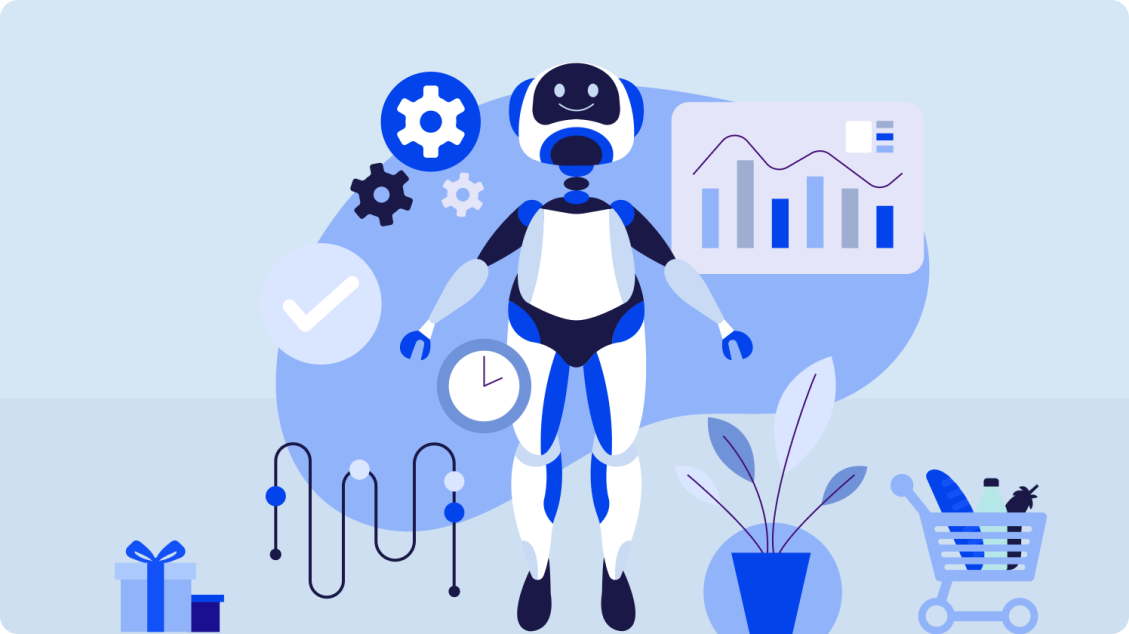In our quest for a smarter world, we often overlook the tough climb facing those less equipped. Barriers to AI implementation in developing economies stand tall, casting a long shadow. Without the right gear, these nations struggle to keep pace in the AI race. Let’s break down these walls and see how equity in tech can become more than a dream.
Understanding the AI Landscape in Developing Economies
The Gap in Technological Infrastructure
You’re eager to see AI help folks, right? But in developing countries, there’s a big hurdle. They lack the tech stuff needed to make AI work well. This means computers, internet, and other gear just aren’t good enough or there at all. This makes it tough for AI to get going. Imagine trying to play a new video game on a very old computer. It won’t work well, right? That’s the problem they face.
Now, think about this: to use AI, you need strong internet all the time. But in many places, the web comes and goes, or it’s too slow. This isn’t good for AI. AI needs fast and steady internet to learn and do its job. Without it, even smart AI can’t show its smarts. It’s like trying to fill a bucket with water when the tap keeps turning off. It takes a lot longer and it’s a real pain.
Countries are trying to fix this, but it’s not easy. They need money to build better tech but finding the cash is hard. Also, if they don’t have good tech now, it’ll be harder to catch up. Other countries keep moving fast, making newer, better things. So the gap just gets bigger. Think of it like a race where one runner has a head start. The one behind has to run much faster just to catch up.
Addressing the High Cost of Entry for AI Technologies
Next up, let’s chat about money. AI sounds cool, but it costs a lot. For many developing countries, the price tag is just too high. It’s like wanting a new bike but the price makes your wallet cry. What do you do? Well, countries face the same issue. They want the AI bike to ride into the future, but they can’t pay for it.
AI needs top tools and brains to work. But getting these costs heaps of money. It’s not just buying them once; you have to keep spending to stay up-to-date. It’s like owning a pet. You can’t just pay to take it home. You need to feed it, take it to the vet, and buy toys. It adds up.
For AI, you need smart machines, and people who know how to use them. Both are pricey. And here’s a kicker: most of the smart machines and AI stuff is made far away. This means countries have to import them, which piles on more costs. It’s like if you live in a small town and have to travel to a big city to buy your bike. You spend more on the trip and it’s a big hassle.
Also, you need folks who can teach AI to solve local problems. In a lot of developing countries, there aren’t many of those AI teachers around. They either need more training or they need to move home from other countries. It’s another big challenge – finding these people and making it worth their while to teach AI.
So, what can be done? Countries are trying to train more people in AI and they’re asking for help to lower costs. They’re forming groups with other countries to share advice and tools. And some are getting creative, like using older tech in new ways. They’re proving that you don’t always need the shiny, new bike to join the race. You might do just fine with the one you fix up with a little love and smarts.
Human Capital: The AI Talent Conundrum
Bridging the Skilled AI Professional Shortage
We need more folks who know AI. This shortage is a big wall blocking AI. Many young people in developing countries are keen to learn, but they often lack guidance and resources. To bridge this gap, we must create paths for them to gain AI smarts.
One way is by setting up tech hubs where they can hang out, get their hands dirty with code, and solve real problems with AI. These places can become beacons of learning. They can attract curious minds and feed their thirst for knowledge. It’s also a space where experienced pros can share their know-how with the new kids.
Enhancing AI Literacy and Education
Reading, writing, and ‘rithmetic are great, but let’s add AI to that list. AI literacy means knowing what AI is and how it works. It’s not just for the boffins anymore; everyone needs to understand its impact.
We can begin in schools. Picture this: a class where kids build robots or use AI to tell stories. These activities make AI fun and relatable. Plus, kids get to use their creativity while learning. We could also have online courses that are as gripping as a good game. These courses could teach AI to folks from all walks of life.
And let’s not forget the teachers. They’re keys to this kingdom of knowledge. We need to give them the right tools and training. That way, they can lead the way in AI education. With the right push, developing economies can overcome the hurdles of AI implementation. They can create a future where their people are not just users but makers of AI tech.
Policy and Ethics: Navigating the Regulatory Terrain
Constructing Robust AI Policy Frameworks
Challenges to AI adoption hit hard when policies lack teeth. Let’s dig in. What is a robust AI policy framework? It’s a set of clear rules. These rules guide how we use AI for good while keeping risks low. This is vital in developing countries. Why? Because such countries are just stepping into the AI game. They need strong rules to play it safe and fair.
The hurdles aren’t small. Developing countries face many, from tech gaps to tight funds. Crafting an AI policy isn’t just about laying down laws. It’s a mix of predicting future tech, smart planning, and public talks. Social habits, cash flow, and pure need shape these policies too.
We must ask: How can developing countries build these AI frameworks? Key steps are simple yet big. First, know what you need. Pin down your country’s main challenges. Next, look at examples from others but tailor them to fit local needs. Finally, get many voices in on the plan. This means lawmakers, AI pros, and everyday people.
We’re not just making rules for the sake of order. This is about paving ways for local innovation in AI. It’s about setting up a field where ideas can grow safely and strongly.
Prioritizing Ethical Considerations and Data Privacy
Now, ethics and privacy take the spotlight. What do we mean by ethical AI? Think of AI that’s fair, respects privacy, and includes everyone. Ethics in AI keeps things in check. It stops AI from harming us with its choices. Data privacy means keeping personal info safe. Why? So that bad folks can’t steal or misuse it.
AI and ethical issues are twins in debate. They walk hand in hand, especially with data privacy concerns. When tech advances, so do risks. We’re talking identity theft, spying, even big lies spread fast. Developing countries often lack the shields to stop these.
How do we make AI that sticks to ethics? Start by setting rules that look after folks’ rights. Be sure that AI systems can’t pick favorites. That’s a no-no. Add clear lines on who can see what data. Make penalties for breaking these lines severe.
People sometimes fear AI. They hear tales of job loss or worse. That’s cultural resistance to AI. To get past this, there has to be trust. This trust grows when privacy and fair use are sure things.
Take healthcare. AI can spot disease faster than ever. But without privacy? People may say no to getting help. And what about AI bias and inequality? These are big no’s too. They cause harm and fan the flames of distrust.
As we iron out the AI policy framework, it’s a battle. A battle for the right mix of freedom and reins. For making sure AI lifts us all up, not just a few. In this fight, every step taken must keep future growth and safety in sight. We don’t just want AI that works. We want AI that works for everyone.
Advancing AI Implementation with Strategic Alliances
Cultivating Public-Private Partnerships for AI Growth
We know that developing countries face many AI adoption challenges. Big hurdles include high tech costs, a lack of skilled folks, and not enough solid tech foundations. Now, what can we do? We bring people together: government and business! That’s right—public-private partnerships.
These partnerships are key. They help overcome the high cost of AI technology. How? Both sides chip in to lower costs. They share money, ideas, and tools. This teamwork also tackles the AI talent gap. Companies and governments can fund training for new AI pros. So, more people are ready to work with AI.
A big worry is keeping data safe and private. Public-private teamwork can help make rules to protect this data. The rules must be clear and easy to follow. They should make sure people’s private info stays safe. This is a lot to tackle, but it’s super important.
The Role of International Collaboration in AI Development
No country can tackle AI on its own. We need friends from around the world to help. By working with others, countries can learn and grow faster. This means sharing knowledge and tools across borders. So, countries don’t have to start from scratch.
International help can lead to new ideas too. It brings in fresh views and unique ways to use AI. This could be in schools, farms, or hospitals. People use AI to solve local problems. And they make sure it works for everyone.
Teaming up with others is not always easy. There are bumps along the road. But these ties can help make the AI journey smoother. They can help make sure AI does good for all, not just a few.
So, to wrap up, we’ve got to work together. Public-private partnerships and global teamwork can smash big AI hurdles. They can lead to cool, fair, and safe AI that helps everyone. This way, developing countries won’t fall behind. They will ride the AI wave to a brighter future.
We dove deep into how AI is changing the game in places where tech is just taking root. We saw the big gaps in gear and tools, and how steep the price tag can be to jump into the AI world. We talked about the need for more AI pros and ways to make more folks AI-smart. Then we checked out the rules and right-from-wrong of AI, stressing strong plans and keeping private stuff safe. And we wrapped up seeing how teamwork, both local and with far-off friends, can really power up AI’s future.
Here’s the deal: AI’s big, but it needs the right stuff, smart people, good rules, and friends working together to really fly. Let’s make it happen!
Q&A :
What are the main challenges developing economies face with AI implementation?
Developing economies often grapple with fundamental challenges when it comes to adopting artificial intelligence (AI). These commonly include a lack of infrastructure, such as limited access to data and inadequate data management systems. Additionally, there may be a shortage of skilled personnel capable of developing and managing AI systems. Financial constraints are also a significant hurdle, as the cost of AI technology and its integration can be prohibitive for nations with limited economic resources.
How does the digital divide affect AI adoption in developing countries?
The digital divide refers to the gap between demographics and regions that have access to modern information and communication technology, and those that don’t or have restricted access. This divide can severely impede AI adoption in developing economies as these technologies require robust digital infrastructure and internet connectivity. Without wide-reaching and reliable access to these technologies, it becomes challenging for developing nations to leverage the benefits that AI can offer.
Can AI contribute to sustainable development in low-income economies?
Despite the challenges, AI has the potential to contribute significantly to sustainable development in low-income economies. By improving efficiencies across various sectors, such as agriculture, healthcare, and education, AI can enhance productivity, help in resource management, and provide critical decision support systems. However, achieving these benefits requires overcoming the initial barriers to AI implementation, including investment in education, infrastructure, and policy frameworks supportive of AI technology.
What role does government policy play in overcoming AI barriers in developing economies?
Government policy plays a crucial role in overcoming barriers to AI implementation. Effective policies can incentivize innovation, foster AI-related education and training, and encourage private-sector investment. Additionally, governments can implement regulations and guidelines to address ethical concerns and data privacy, which are critical for establishing public trust in AI technology. Robust policy frameworks can also help tackle infrastructure deficiencies and promote the development of local AI industries.
How important is education in addressing the barriers to AI in developing economies?
Education is a key component in addressing the barriers to AI in developing economies. A skilled workforce is essential for the development, maintenance, and ethical governance of AI systems. Educational initiatives need to focus on STEM fields, particularly in computer science and data analytics, to build local expertise. Furthermore, public awareness about AI and its potential impact can foster a more conducive environment for AI adoption and innovation.






